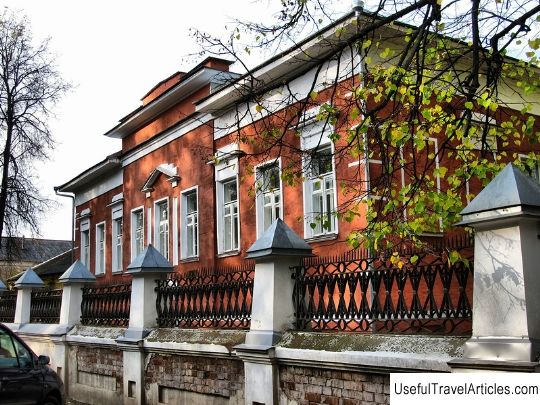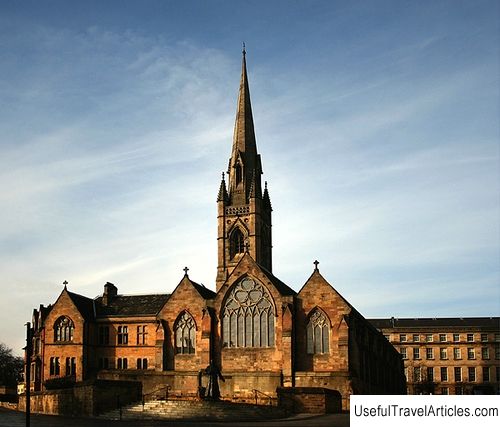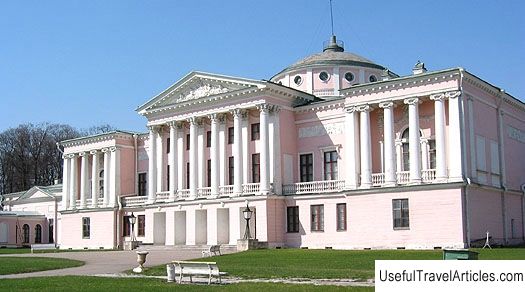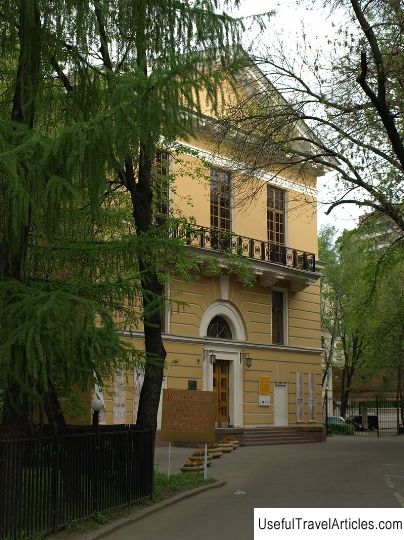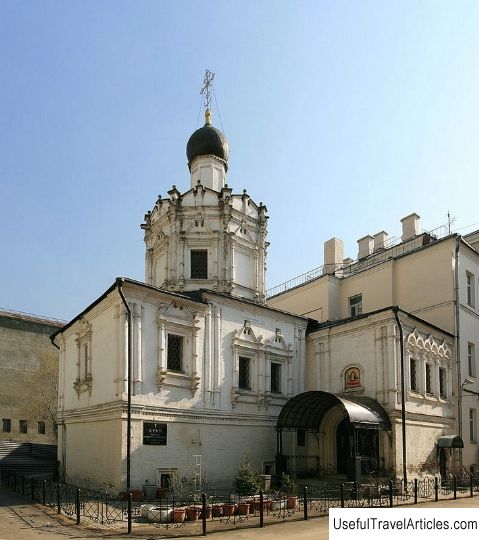Kuskovo estate description and photo - Russia - Moscow: Moscow
Rating: 7,5/10 (100 votes) 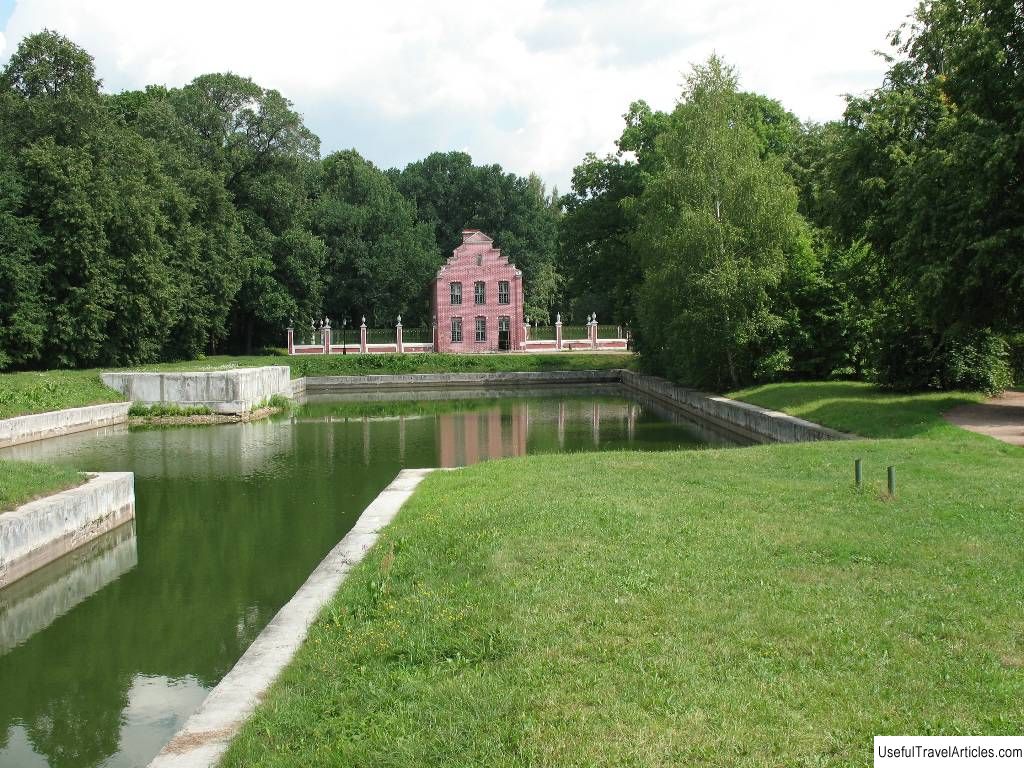
Kuskovo estate description and photo - Russia - Moscow: Moscow. Detailed information about the attraction. Description, photographs and a map showing the nearest significant objects. The name in English is Kuskovo. Photo and descriptionThe former estate of the Sheremetevs in Moscow Veshnyaki is one of the oldest architectural ensembles in the capital. The Kuskovo estate was built in the 18th century, and the architectural and park ensemble of its front part has been preserved in perfect condition to this day. The palace of the Sheremetev counts in Kuskovo is a monument of early Russian classicism, which presents works of painting and applied art. History of the creation of KuskovoThe village of Kuskovo was in the possession of the Sheremetev family at the end of the 16th century. A few decades later, a boyar courtyard and serfs' huts were built, a wooden church was erected. In this form, Kuskovo existed until the middle of the 17th century, when the inherited estate Peter Sheremetev decided to rebuild the estate. He instructed the architects to build a large palace and lay out a park, as well as create several "entertainment ventures" for the many guests who regularly came to Kuskovo. Fyodor Argunov and Alexey Mironov , chosen by the executors of the count's instructions, were serfs. The earliest buildings on the estate were the Church of the All-Merciful Savior, a Dutch house, the grotto pavilion and a large stone greenhouse ... Later, the Italian house and the Hermitage pavilion appeared. The construction of the large palace took six years and was completed by 1775 . The Grand Palace of the estate Petr Borisovich Sheremetev, deciding to rebuild Kuskovo, in the future he planned to use the estate as a place for out-of-town entertainment. The palace, later called the Bolshoi, was intended for a ceremonial reception for the Moscow elite, who regularly visited Kuskovo in the summer. The palace was built in full accordance with the then fashionable traditions of Russian classical architecture. The building had two floors and was located on a high plinth. The first floor contained several ceremonial rooms, a ballroom, a dining room, living rooms and the master's office. The upper floor was occupied by the mezzanine, and the basement was occupied by utility rooms and an impressive wine cellar. Researchers believe that Charles de Vailly , a Parisian architect, took part in the work on the palace project. representing French classicism and having an undoubted influence on the Russian architects who worked in the same traditions. It was not possible to find evidence of Sheremetev's collaboration with the French luminary, but researchers of the architectural ensemble of Kuskovo find many details characteristic of Charles de Vailly's style. Three porticos of the palace on the main facade greet visitors with solemn decor. The triangular pediment of the central one is richly decorated with lush carvings that surround the monogram of Peter Sheremetev , and the side entrances with semicircular pediments are decorated with military attributes. Wide steps of a white-stone staircase lead to the main portico, and on the sides of it there are ramps for horse carriages. The central entrance is decorated with sculptural images of sphinxes with female heads. The interior of the mansion has perfectly preserved decorative elements - fireplaces and floors, wood carvings and stucco ceilings, mirrors and lamps. Fabric wall decoration and palace furniture have been restored from drawings and photographs. What to see for architecture lovers The architectural complex has survived to this day in almost perfect condition, and excursions to Kuskovo allow you to imagine the appearance of buildings at the time when the Sheremetevs owned the estate. Parish Church The All-Merciful Savior first appeared at the beginning of the 17th century. The wooden church was the center of the village of Kuskovo until 1737, when Pyotr Sheremetev, who inherited the estate, decided to build a new stone church. The only altar of the temple was soon consecrated in honor of the Origin of the Honorable Trees of the Life-giving Cross of the Lord. The architectural style in which the church was built is called the Annensky Baroque. It became widespread during the reign of Anna Ioannovna. The temple has survived to this day in almost its original form. It was only restored and re-consecrated at the end of the last century. The garden pavilion on the bank of the Kuskovsky pond, built in 1749, has the features of Dutch buildings - small and laconic. It was used for various amusements and was named Dutch House . Around the pavilion in the time of Pavel Sheremetev, a vegetable garden and a garden were laid out, and the gazebos located on the banks of the pond, were designed to create the illusion that guests are on the banks of the Amsterdam canals. The apparent simplicity of the Dutch house is deceiving. Its interior is decorated with thousands of handmade tiles, porcelain trinkets and paintings of all sizes. The author of the Grotto pavilion is the same fortress architect who also built the Sheremetevs' house on Fontanka in St. -Petersburg. Fyodor Argunov used the techniques of the Rococo style and generously decorated the "Grotto" with niches, sculptures, bas-reliefs, stone lion masks, colored glass and sculpted sea shells. Argunov tried to create a building that embodies the unity of stone and water, and he succeeded quite well. The pavilion was completed in 1761. During the holidays, when hundreds of guests came to Kuskovo, One could take a break from the noise of the ballroom in the Hermitage Pavilion , intended for the chosen friends of Sheremetev. On the first floor of the building there was a servant preparing food and drinks. Guests were accommodated on the second floor, where they were taken by an elevator. The Italian house was built by the art connoisseur Yuri Kologrivov, who studied his craft in Rome. On the ground floor, in rooms with low ceilings, rarities were placed - paintings embroidered with beads; panels from colored marble; antique sculptures; models of the churches of the Nativity of Christ in Bethlehem and the Holy Sepulcher in Jerusalem. The second floor is high and light, and paintings were exhibited in its rooms. In the 18th century, an aviary for birds and bird houses-menageries were also built in the estate, The Swiss House and the Air Theater, the kitchen wing and the bell tower of the Church of the All-Merciful. State Museum of Ceramics In 1932, the exposition of the Museum of Ceramics , which is one of the world's largest museums of this subject matter, was transferred to Kuskovo. The Kuskovo collection contains more than 30 thousand items dating back to a huge time period - from antiquity to the present day. Among the museum's exhibits are Italian majolica and Murano glass, Russian and English porcelain, crystal and ceramics. The basis of the museum exposition in the early 30s of the last century was the collection of A. V. Morozov - a Moscow collector of Russian art objects. After the revolution, his collection was nationalized and transferred to the State Museum of Ceramics. The collection of Morozov's exhibits, which constitutes a fund for the museum, also contains diaries and a scientific description of the collection made by Alexei Vikulovich with his own hand. The largest part of the collection is a retrospective of Russian porcelain produced in the 18th-19th centuries at the Imperial Factory and factories of Batenin, Gardner, Kornilov , Popov and Safronov. In addition to tableware and figurines, clocks and lampshades for table lamps, the exposition includes stained glass windows created by Swiss glassblowers in the late 15th - early 17th centuries. Museum expositions of the Kuskovo estate The portrait gallery of the Big Stone Greenhouse in Kuskovo is a collection of paintings of high artistic value and is a rarity of Russian fine art of the 18th century. It was created by Peter Sheremetev in order to perpetuate the family and become evidence of the high origin of the count and his ancestors. The gallery displays portraits not only of members of the count's family, but also of noble European and Russian persons of different eras. The portrait gallery of Kuskovo contains images of Ivan the Terrible and the Grand Dukes, Empress Catherine II and more than forty monarchs of Europe. The portrait gallery in Kuskovo is the most complete collection of such collections of fine art masterpieces that existed in noble estates. The works are on display in the halls the interior of which maximally emphasizes the artistic value of the collection. The exposition of the portrait gallery reproduces the historical environment of that era. The exhibition project "In the Native Walls" is another exposition that tells the visitors of the estate about the original decoration of the palace and pavilions. The halls of the estate showcase the original items owned by the Sheremetev family: a mantel clock from the Count's bedroom depicting a muse of history, gilded candelabra, chandeliers from the ballroom, mirrors in massive frames, books and furniture. Weekend in Kuskovo Go to Kuskovo with the whole family and spend the whole day in the former count's estate? Decide boldly after all, even the youngest visitors will not be bored. For toddlers and adolescents, the estate's employees organize fascinating master classes , where you can learn how to turn modern products into vintage ones, weave amulets in the form of dolls, make New Year's and Christmas toys, paint Easter eggs, draw postcards in the Rococo style and create botanical collages. In the ceramic workshop, guests will be taught how to mold a pot, plate or even a figurine. A professional master will help you master a real potter's wheel. The program of the "Porcelain Secret" lesson reveals the secrets of making fragile and beautiful items that are exhibited in the museum of the Kuskovo estate. Groups of tourists can play a role-playing game on the theme of palace coups , during which the participants try on the roles and responsibilities of historical characters. On the basis of such games, graduation parties for students and birthday parties for schoolchildren are often held in the estate. The educational project "Museum Professionals" is recruiting many people. During their studies, schoolchildren learn about professions, without which it is difficult to imagine the work of a modern museum exhibition.            We also recommend reading National Heroes Park description and photos - Jamaica: Kingston Topic: Kuskovo estate description and photo - Russia - Moscow: Moscow. |
